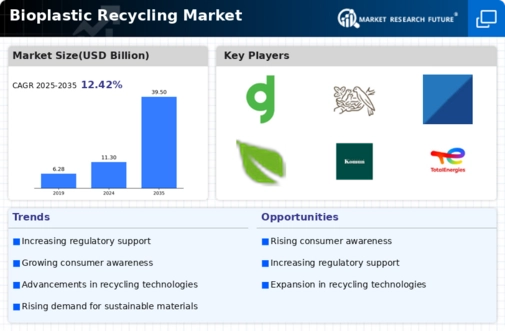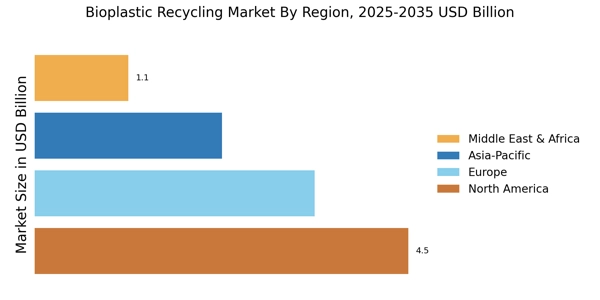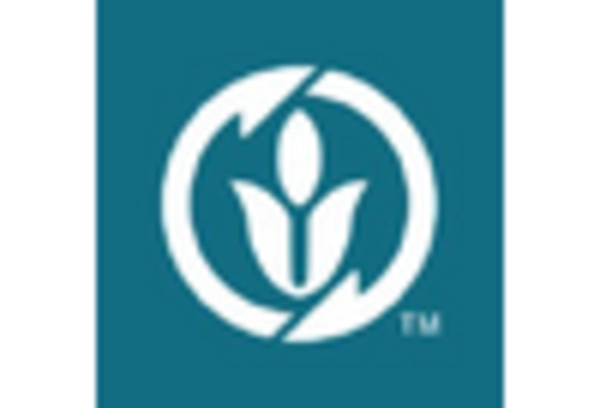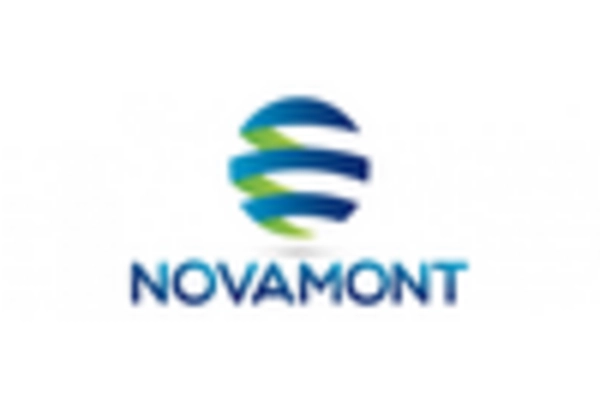Rising Environmental Awareness
The Bioplastic Recycling Market is witnessing a notable increase in environmental awareness among consumers and businesses alike. As the detrimental effects of plastic pollution become more apparent, there is a growing demand for sustainable alternatives, including bioplastics. Surveys indicate that over 70% of consumers are willing to pay a premium for products made from recycled materials. This shift in consumer behavior is prompting manufacturers to invest in bioplastic recycling initiatives, thereby expanding the market. The heightened focus on sustainability is likely to drive innovation and investment in the Bioplastic Recycling Market, fostering a circular economy.
Increasing Regulatory Frameworks
The Bioplastic Recycling Market is significantly influenced by the establishment of stringent regulatory frameworks aimed at promoting sustainability. Governments are implementing policies that encourage the use of bioplastics and their subsequent recycling. For instance, regulations mandating the reduction of single-use plastics are driving manufacturers to explore bioplastics as viable alternatives. This regulatory push is expected to create a favorable environment for the bioplastic recycling sector, with projections suggesting a compound annual growth rate of 15% in the coming years. Such frameworks not only facilitate market growth but also enhance public awareness regarding the importance of recycling bioplastics.
Corporate Sustainability Initiatives
The Bioplastic Recycling Market is being propelled by the rise of corporate sustainability initiatives. Many companies are adopting comprehensive sustainability strategies that include the use of bioplastics and their recycling. This trend is particularly evident in sectors such as packaging, where firms are seeking to reduce their carbon footprint. Data suggests that companies implementing sustainable practices can enhance their brand image and customer loyalty, which is crucial in today's competitive landscape. As more organizations commit to sustainability, the demand for bioplastic recycling solutions is expected to grow, further solidifying the Bioplastic Recycling Market's position in the economy.
Investment in Recycling Infrastructure
The Bioplastic Recycling Market is benefiting from increased investment in recycling infrastructure. Governments and private entities are recognizing the need for robust recycling systems to handle bioplastics effectively. Recent reports indicate that investments in recycling facilities are projected to reach several billion dollars over the next decade. This influx of capital is aimed at enhancing collection, sorting, and processing capabilities for bioplastics. Improved infrastructure not only facilitates higher recycling rates but also encourages innovation in recycling technologies. As a result, the Bioplastic Recycling Market is poised for substantial growth, driven by these infrastructural advancements.
Technological Innovations in Bioplastic Recycling
The Bioplastic Recycling Market is experiencing a surge in technological innovations that enhance recycling processes. Advanced techniques such as enzymatic recycling and chemical depolymerization are being developed, which allow for more efficient breakdown of bioplastics. These innovations not only improve the quality of recycled materials but also reduce energy consumption during the recycling process. According to recent data, the adoption of these technologies could potentially increase recycling rates by up to 30% over the next five years. As a result, companies are investing heavily in research and development to stay competitive in the Bioplastic Recycling Market, indicating a promising future for sustainable practices.


















Leave a Comment